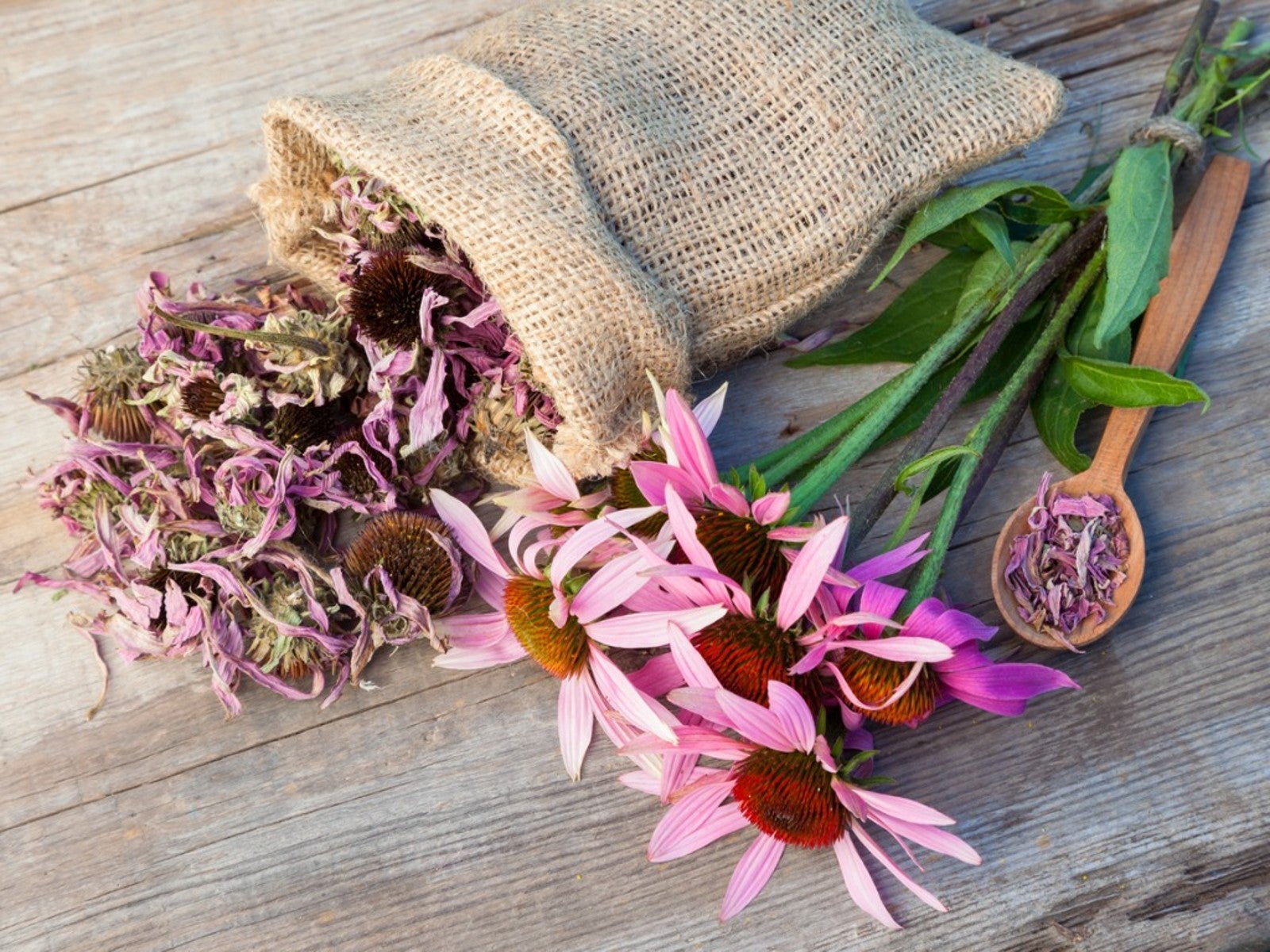How To Harvest Echinacea Flowers, Seeds And Roots


Purple coneflower, also known as echinacea, is a beautiful perennial. It is native to much of the eastern U.S. and attracts beneficial pollinators. It is also an edible plant. Knowing how to harvest echinacea for tea, tinctures, seeds, and more, gives you many more uses for your pretty coneflowers.
Why Harvest Echinacea?
This native plant has long been used in herbal remedies. Native Americans used it to treat bites, stings, and burns. Modern research has determined that echinacea is useful in many medical preparations because it boosts the immune system, reduces inflammation, and shows antibacterial properties.
Every part of the plant is edible. You can dry the flowers, leaves, and roots to create teas, tinctures using alcohol to extract the healing compounds, and decoctions to extract substances from the roots using boiling water.
When to Harvest Echinacea
Harvest echinacea flowers while they are in full bloom. When harvesting echinacea seeds, wait until the flowers are spent and the seedheads are totally dry but not yet falling from the plants. Wait at least two growing seasons to harvest the roots of echinacea plants and do it in the fall once they have gone dormant.
How to Harvest Echinacea
The echinacea harvesting method depends on which part you want to collect and save. To harvest the flowers and leaves, cut stems above the lowest leaf pairs. You can remove the flowers and leaves to use separately or dry the entire stems. Lay them out flat in a sheltered, dry location, or hang them in bunches until they’re entirely dry. You can then remove the dried flowers and leaves to store in sealed containers.
Harvesting the roots takes a little more effort. You will need to dig up the plants to remove the entire root system. You can then cut the root back by about half and replant it. Clean the cut roots very well and cut them into smaller pieces. Let them dry completely, which can take a few weeks, and then store in an airtight container.
To keep your perennials going, or to share with friends, consider harvesting the seeds as well. Let the seedheads mostly dry on the plants before picking them. Cut them from the stems and let them dry further in a paper bag.
Sign up for the Gardening Know How newsletter today and receive a free copy of our e-book "How to Grow Delicious Tomatoes".
Removing the seeds from the head is the trickiest part of harvesting them. To protect your fingers from the sharp spikes, use a knife or kitchen scissors to scrape them out of the seedhead. You’ll see the dark coverings fall off. The lighter, rice-like pieces are the seeds. Collect these and store in envelopes for next year or share with friends and neighbors.

Mary Ellen Ellis has been gardening for over 20 years. With degrees in Chemistry and Biology, Mary Ellen's specialties are flowers, native plants, and herbs.